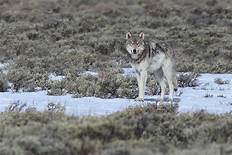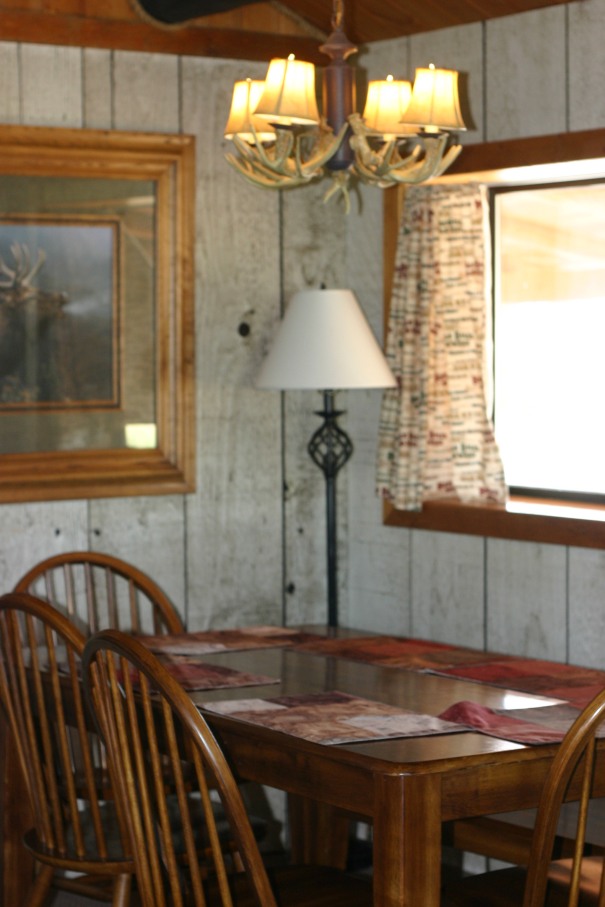When Hubby and I still newly married, one of our first trips together was a road trip to Montana via Yellowstone Park. The reason behind such a strange route to the Indian Battlefields of Montana (our real destination) was so that I could visit with my cousin.  She and her fishing-guide husband lived just outside West Yellowstone, Montana. Although that first trip was “passing through” on our way to the Little Big Horn, Yellowstone and its surrounding area captured our hearts. While most of Yellowstone is in Wyoming, the park spans almost 3,500 miles, extending into parts of Montana and Idaho, making it one of the largest National parks in the US.
She and her fishing-guide husband lived just outside West Yellowstone, Montana. Although that first trip was “passing through” on our way to the Little Big Horn, Yellowstone and its surrounding area captured our hearts. While most of Yellowstone is in Wyoming, the park spans almost 3,500 miles, extending into parts of Montana and Idaho, making it one of the largest National parks in the US.
Hubby and I returned to the park the year following our first visit. While the thermal features of the park were interesting, it was the opportunity to move among wild animals of the old west that drew us back year after year. For me, it was the Bison that captivated my imagination. I could sit for hours and watch the herds moving through Hayden Valley. Even now, I can still hear the pounding of hooves and feel the ground shake. It was like nothing I had ever experienced before.

When Kiddo first became a part of our family, vacations to Yellowstone were put on hold. Once he was old enough to appreciate the grandeur of the park, he became our constant traveling companion. Much to our surprise, Kiddo had little interest in the wild animals that roamed the park. His true fascination was with the unique thermal features that abound. Most of Yellowstone National Park sits within the caldera of an ancient super volcano. The volcano is neither dormant nor in a deep slumped – it is only napping. There are spots within the park that molten rock bubbles a mere three-miles below the surface. Yellowstone is home to more geysers and hot springs than any other place on earth. The four basic thermal features can all be found within the boundaries of the park.
Geysers are hot springs that periodically erupt. The channels of heated water within a geyser are narrow and this restriction causes a release of water and steam under pressure. It would be like putting your thumb over the end of a running water hose. Hot Springs are similar to geysers, but their underground channels are large enough to allow rapid circulation of boiling water. As the water is heated, it rises to the surface of the pool, sometimes bubbling up. Some of the water evaporates as steam, some overflows in a colorful run off, while most of the water cools, returning to the spring only to be heated again. Fumaroles are holes or vents in the ground that release steam. Some fumaroles lack enough water to form a hot spring. Others are so hot that the water evaporates in a hiss of steam before pools can form. Mudpots are areas where the water-saturated sediment, similar to clay, is dramatically affected by super-heated steam below. The steam forces its way to the surface, bursting upwards in a shower of mud bubbles. These are all signs that the volcano’s enormous pool of magma is alive and kicking just below our feet. Approximately every 20 years or so Yellowstone experiences major shifts in the ground – be it a large singular earthquake or a swarm of quakes. One of the most famous of these shifts was a 7.5 quake in 1959. The last major shift was 19 years ago. If the pattern continues, then Yellowstone is due.

We visit the park every few years. With each visit is an appreciation of the awesome power of Mother Nature and the ever-changing landscape. The wildlife and thermal features of the park are constantly evolving, making each visit new and exciting. We have seen first hand the impact events within the park have had, be those natural or man-made. The heavy tolls of the 1988 wild fires, the reintroduction of wolves to Lamar Valley in 1995, and the steady growth of the bear population over the years are the most noted changes to the wildlife.
 While fires in Yellowstone are nothing new, the fires of 1988 caused a large decline in the moose population. Thirty years later and the herds have not yet fully recovered. Moose are solitary animals, with a need for acquitted food supplies and forest cover to hide from predators. The fires distorted mush of what the moose needed in order to survive. While moose are still spotted within the park, the big bull moose are a rare sight. In all the years of visiting Yellowstone, we have only seen a bull moose twice, once in the park on the west side, the other in a picnic area on the east side. Females and young moose are spotted, but not very often.
While fires in Yellowstone are nothing new, the fires of 1988 caused a large decline in the moose population. Thirty years later and the herds have not yet fully recovered. Moose are solitary animals, with a need for acquitted food supplies and forest cover to hide from predators. The fires distorted mush of what the moose needed in order to survive. While moose are still spotted within the park, the big bull moose are a rare sight. In all the years of visiting Yellowstone, we have only seen a bull moose twice, once in the park on the west side, the other in a picnic area on the east side. Females and young moose are spotted, but not very often.
 Yellowstone was the first National Park, established under the presidency of Ulysses S. Grant in 1872. Despite the national park status, the hunting of wolves in the area continued and the gray wolf received no protection. The last wolves were killed in Yellowstone in 1926. After that time, sporadic reports of wolves still occurred, but scientists confirmed that sustainable wolf populations no longer existed by the 1930s. Starting in the 1940s, park managers, biologists, conservationists and environmentalists began what would ultimately turn into a campaign to reintroduce the gray wolf into Yellowstone National Park. It only took about 50 years to become a reality. In the meantime, the absence of wolves, the deadliest predictor of the Yellowstone Elk herds, changed the balance of both plants and animals within the park. As the Elk population began to grow, the trees began to decline. With only the black bears, the grisly bears and an occasional coyote to fear, the herds themselves slowly stopped moving about in the park, concentrating within the valley along creeks and rivers. The elk began to destroy the tree population. Less trees meant less beaver. Few damns meant less standing water. Less still water meant less insect population, which affected both the bird and fish population. The reintroduction of wolves was an attempt to correct a prior mistake. Unfortunately, the elk herd of 1995 had no natural fear of wolves. The wolf pack grew, they were the kings of the predatory food chain. The balance officials were seeking did not return to the park. During our visit to the park three years ago, we noticed a sharp decline in the elk population.
Yellowstone was the first National Park, established under the presidency of Ulysses S. Grant in 1872. Despite the national park status, the hunting of wolves in the area continued and the gray wolf received no protection. The last wolves were killed in Yellowstone in 1926. After that time, sporadic reports of wolves still occurred, but scientists confirmed that sustainable wolf populations no longer existed by the 1930s. Starting in the 1940s, park managers, biologists, conservationists and environmentalists began what would ultimately turn into a campaign to reintroduce the gray wolf into Yellowstone National Park. It only took about 50 years to become a reality. In the meantime, the absence of wolves, the deadliest predictor of the Yellowstone Elk herds, changed the balance of both plants and animals within the park. As the Elk population began to grow, the trees began to decline. With only the black bears, the grisly bears and an occasional coyote to fear, the herds themselves slowly stopped moving about in the park, concentrating within the valley along creeks and rivers. The elk began to destroy the tree population. Less trees meant less beaver. Few damns meant less standing water. Less still water meant less insect population, which affected both the bird and fish population. The reintroduction of wolves was an attempt to correct a prior mistake. Unfortunately, the elk herd of 1995 had no natural fear of wolves. The wolf pack grew, they were the kings of the predatory food chain. The balance officials were seeking did not return to the park. During our visit to the park three years ago, we noticed a sharp decline in the elk population.

The solution? Wolves outside the park are once again hunted. Wyoming issues a limited number of licenses a year through a lottery process. The elk herd is recovering, with a new respect for wolves.
Once upon a time, a trip to Yellowstone meant bears sitting along the road, begging like dogs to be fed. The park allowed visitors to feed the wild animals without fully realizing the consequences. What park officials knew was that people came to Yellowstone to experience bear encounters. These encounters drove tourism. Unfortunately, the bears became dependent on humans for food and survival. Bears were known to attack visitors who did not feed them and many lost the ability to hunt for themselves. The park officials were forced to relocate the bears to higher elevations, away from the roads and facilities within the park.

Beginning in the 1990s, wildfires began to ravage the higher elevations, driving the bear population to lower ground. This coupled with the growing number of bears within the park created problems. Due to the protection afforded bears, especially within the national park system, grisly bears are no longer considered endangered. They have flourished. From the mid 1980s to the late 1990s, we noticed a spike in the number of bears spotted near roadways. There is talk once more of allowing grisly bears to be hunted outside the park. The state of Wyoming approved issuing hunting licenses earlier this year. That said, the licenses are on hold as politics and heated debate continue to play out. It is unlikely that bears will be hunted this fall. Who knows, it might not happen for years to come. In the meantime, it is up to park officials to control the bear population and even put down bears that are repeat offenders when it comes to interacting with people. Between the hunting and the destruction of bears behaving badly, the sightings of bears in Yellowstone will once again be rare.
Sharing our Holiday Vacation through the lens of a camera . . .
Day One – Arriving in Cody and settling into our cabin. This was our second stay at Rand Creek Ranch. Hands down, if you are looking for a comfortable place to call your home away from home, this is the place.










Tomorrow’s travels will take us into the park itself . . . hope you can come along. The views are spectacular and speak for themselves.
Day 2 – Wildlife and the Geyser Basins






Oh, we’re due for another Yellowstone trip, too. I’m with Kiddo. I was so smitten with the beauty of the bacteria up there that I came home and painted that. We hadn’t been to Cody before. On the list now… 🙂
LikeLike